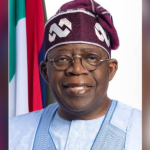A move to sustain the push towards creating a new economic world order is underway in Johannesburg, as this year’s summit involving Brazil, Russia, India, China and South Africa, otherwise known as BRICS opens.
The BRICS summit in South Africa is kicking off at a time the world is in a tumultuous political situation and global economic uncertainties
Russia, a key member of the BRICS is still in armed conflict with its neighbour Ukraine, and facing tonnes of economic sanctions from the West.
China, its major political ally, is seen as an economic threat to the United States – Russia’s main political adversary
South Africa, India and Brazil on the other hand have been longtime allies of the United States, but the BRICS pact, may not only create contradictions in that relationship but up-end it.
South Africa, for instance has been under pressure from the United States prior to the decision of Russian President Vladimir Putin not to physically attend the summit amid calls for his arrest for war crimes by the International Criminal Court ICC. Putin will be attending virtually, but represented by foreign minister Sergei Lavrov.
MUST READ:VP Shettima attends 15th BRICS Summit in South Africa
So what really is the economic agenda of the BRICS? Primarily, to create an economic order that is more balanced against the dominance of the western controlled G-7.
Battered by sanctions from the G-7, Russia is hoping to use the influence of BRICS to whittle down the dominance of the United States and advance a new economic world order that will be more beneficial to its interest
To put things in context, the combined GDP of the five BRICS countries is about $26.03 Trillion, compared to the overall GDP of the G-7 which is $45.9 Trillion, according to 2023 data by research group Statista
At country level, the United States alone which is the dominant player in the G-7 has a GDP of $25.46 Trillion as at 2022; While China, the world’s second-largest economy and the biggest bull in the BRICS holds a GDP of $17.96 Trillion, according to a 2022 World Bank data.
What this data means is that the BRICS may still have some catching up to do to create the new economic balance they are seeking for.
However, that process could speed up with about 40-nations, seeking to join BRICS. Among the countries is Africa’s largest economy – Nigeria, and six other African countries along with countries from the Middle East including heavyweights Saudi Arabia and Iran backed by their massive oil wealth
A former deputy permanent representative of Nigeria to the United Nations in New York, Ambassador Usman Sarki, tells ait.live that Nigeria stands to benefit from credit and development financing with less conditionalities by joining BRICS, compared to what is obtainable from the Bretton Woods financial institutions
Ambassador Sarki also does not envision any rivalry between the BRICS and the G-7, but a relationship based more on cooperation.
It is also significant that an African country is hosting the 2023 summit, the first physical summit since the COVID19 pandemic. South African President Cyril Ramaphosa described it as representing a common desire to have a more balanced global order
While the agenda of the 2023 BRICS is yet sketchy, the bloc is expected to discuss financing and lending within the BRICS bank, formally known as the New Development Bank which was established in 2015 and how to stem the impact of foreign exchange fluctuations
Other areas include increased economic cooperation and the expansion of the bloc to include more members seeking to join.
One thing is sure, the west will be closely monitoring the two days BRIC summit and its outcome and how it will impact already existing international diplomatic trade ties and alignments.
(Editor : Ena Agbanoma)








